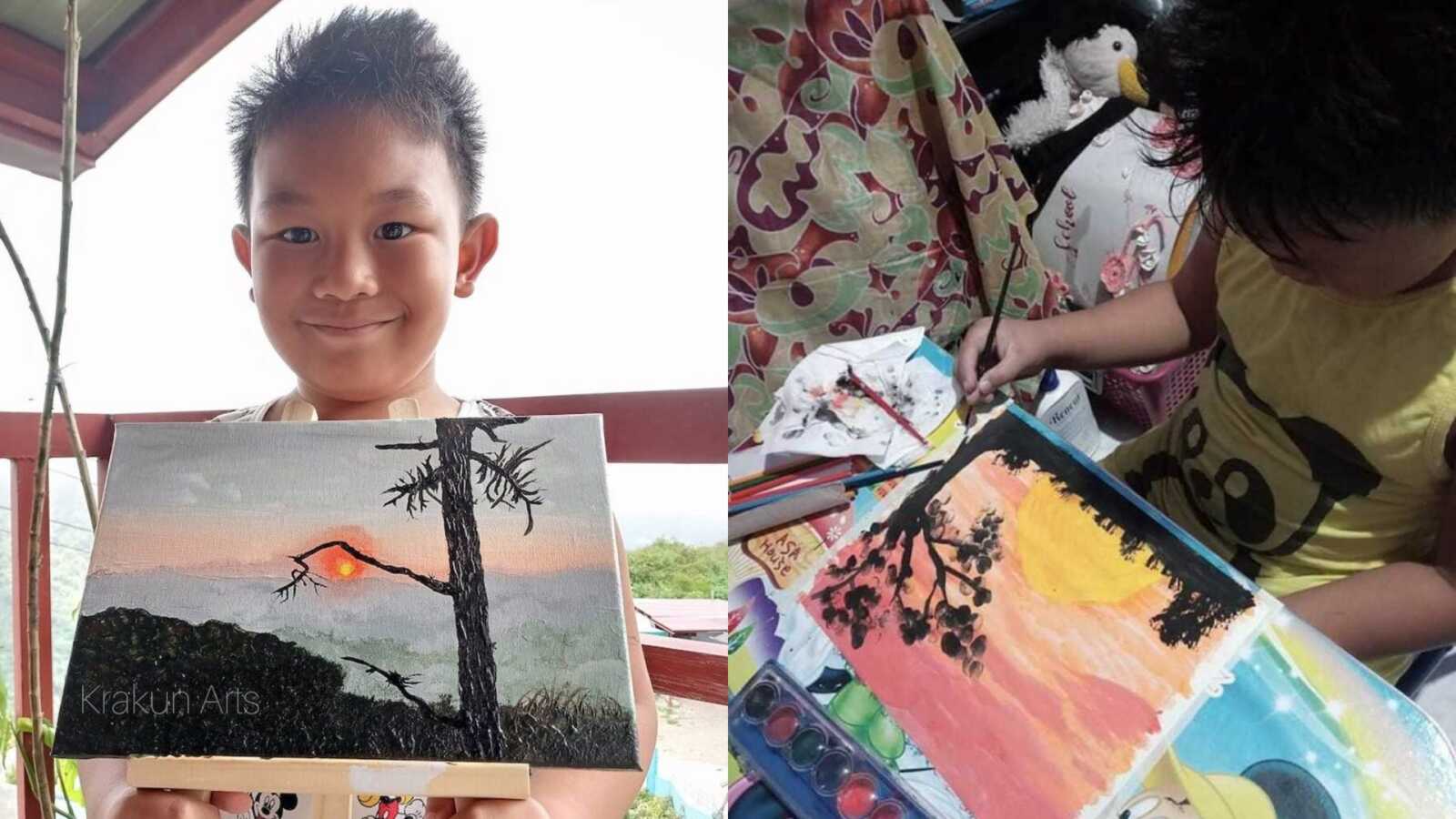“‘His symptoms are very consistent with ADHD,’ the psychiatrist said. I had a feeling what I denied for several months would be confirmed that day even before the psychiatrist explained what ADHD was and how it affects a child. My son’s psychiatrist talked about ADHD as I stared into blank space, unwilling to digest what she was saying.
As a mom whose child spoke earlier than his peers and showed signs of advanced intelligence, I felt insulted. How can a child with a bright mind be diagnosed with ADHD? I’ve heard about it, but I didn’t understand the extent of challenges a child with ADHD faced on a daily basis. It broke my heart on many levels.
A New Baby
Naphtali Axl Brycg. I came up with his name when I was about three months pregnant. Naphtali meant ‘my struggle.’ Leah, Jacob’s wife, named Naphtali in commemoration of her ‘victory’ over her sister, Rachel. I named my son Naphtali to commemorate my ‘victory’ over my demons once I learned I was with child. Axl means ‘Father of Peace,’ and ‘Brycg’ is the Old English spelling of ‘bridge.’
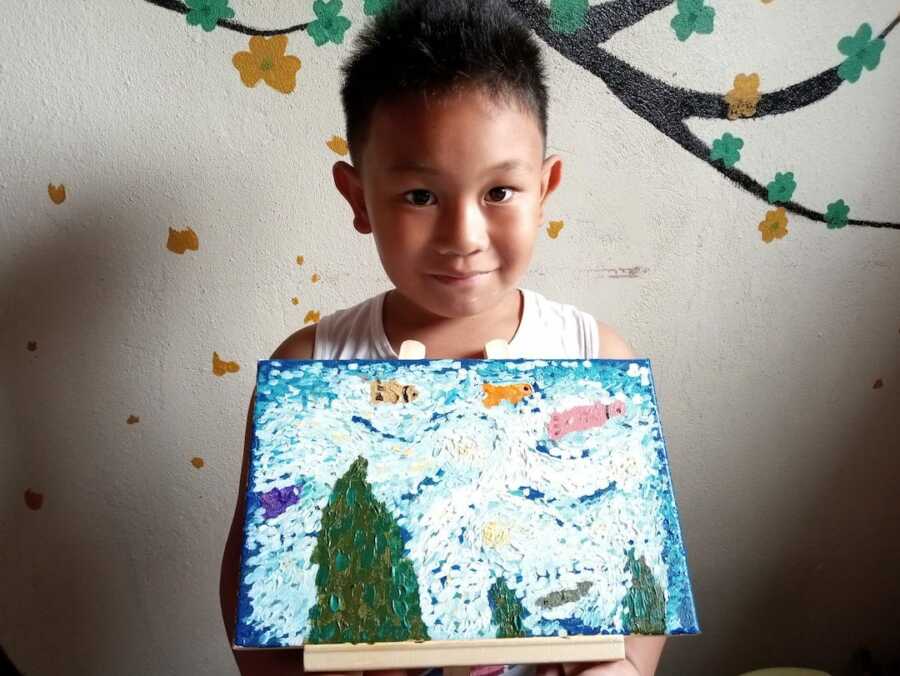
I prayed my son would overcome all the challenges he would face in life and take pride in all the lessons he learned after each fall. I prayed my son would become someone who encourages peace wherever he is. I prayed my son would become a bridge that brings people together…I prayed for his success and named him thus.
Doesn’t every parent want the best for their child? To be honest, when I was pregnant, I wished my son would be tall, very handsome, and very intelligent. When I finally had Naph after 18 hours of labor and a caesarean section, I didn’t care about anything else. I just wanted him to be healthy and to become a good person.
From birth, Naph already conveyed a strong personality. He was very fussy and cried loudly. At the hospital, a nurse said, ‘I know it’s him because I can hear his cries from the hallway.’ Even after we went home from the hospital, he would cry for about an hour, sleep for about three hours, then cry again—the routine repeated itself especially at night. As a nocturnal baby, he would keep everyone in the house awake at night due to his constant crying. It was a challenge to get him to sleep, much more to get him to stop crying. But, we did our best, and as the months passed, his ‘colicky’ patterns became ‘normal’ in the household.
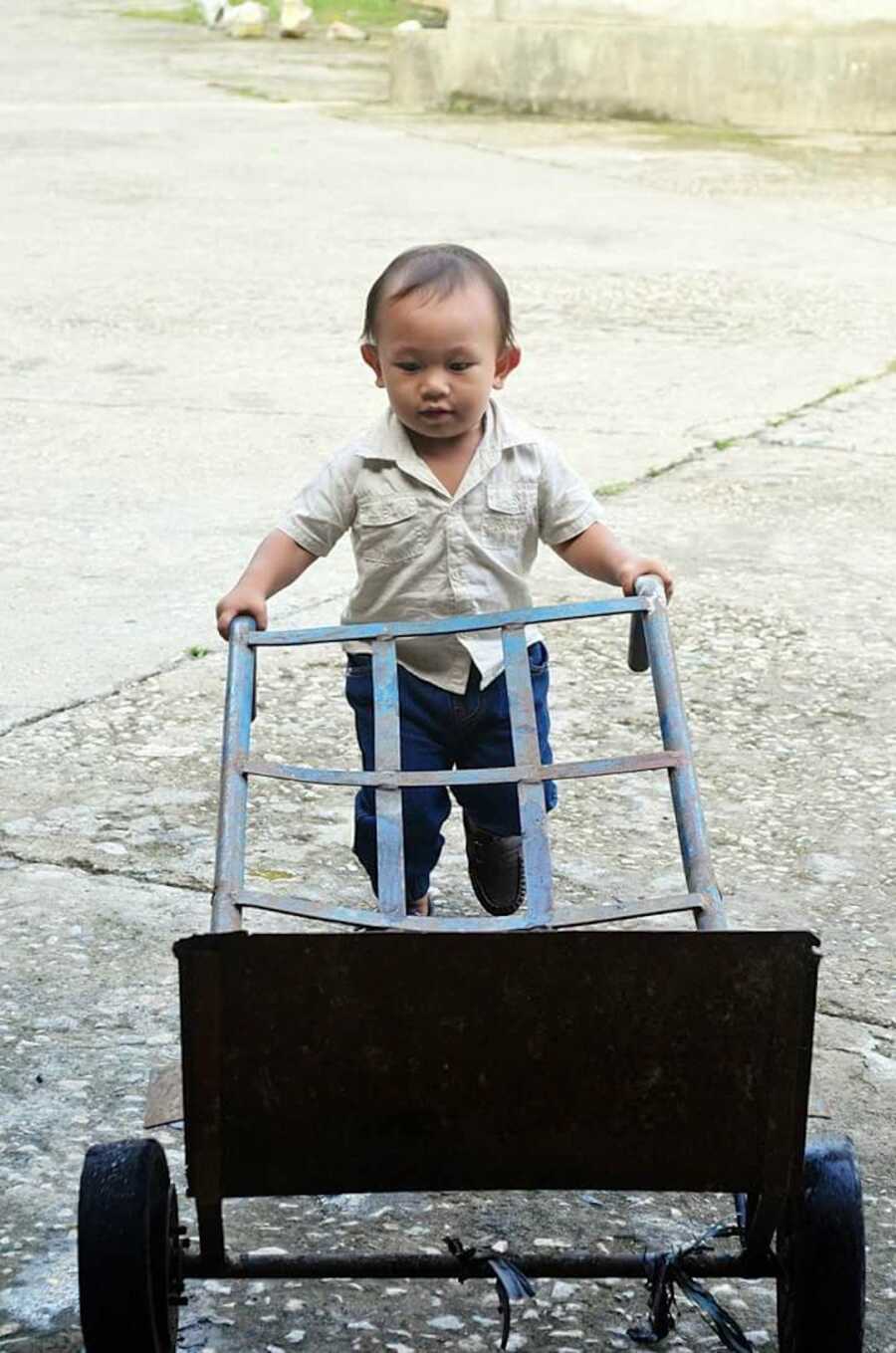
Early Achievements
His first word was ‘Ab-ba’ at about three months old. He went on to say ‘At-te.’ ‘Ate’ is a term in the Philippines used for elder sisters. At five months, he said ‘Tee-ta.’ In the Philippines, ‘Tita’ is usually the sister of one’s mother. At six months, he said ‘Mama,’ which isn’t me, by the way. He calls my mother Mama, and me, Mommy. He said ‘Dad-dy’ at nearly seven months and only said ‘Mommy’ at around 10 months. Before saying ‘Mommy,’ he already knew the words eat, carry, hot, cold, come, now, no, get, toy, want, and a few other basic words.
I was very proud of his early achievements. As a one year old, he had a vocabulary of more than 45 words. His communication skills progressed very quickly, and at 2, many people told us he could talk and express himself very well compared to other kids his age. I was just a happy and proud mom. I knew his tantrums were getting out of hand, but I focused on his wide vocabulary and initially didn’t think through how easily he got frustrated with even the smallest tasks and how he talked almost endlessly even after his supposed bedtime. (Yes, there have been times when we were already asleep and he was still talking. We’d only realize he was still talking at around 1 a.m. when he threw tantrums because we didn’t respond.)
As a toddler, he would be finicky about clothing, certain smells, and even with some people. He would often burst out angrily and yell, turn tables upside down, stomp his feet when things don’t go his way, and have a hard time listening to instructions. When talking to someone, he would get impatient if the other person didn’t respond quickly to his questions. When very happy, he would jump up and down and run around, even bumping into walls and furniture—all without care whether he hurts himself or not. When very angry, he would throw stuff and yell—there have been times when he hit me and his dad, but never other people.
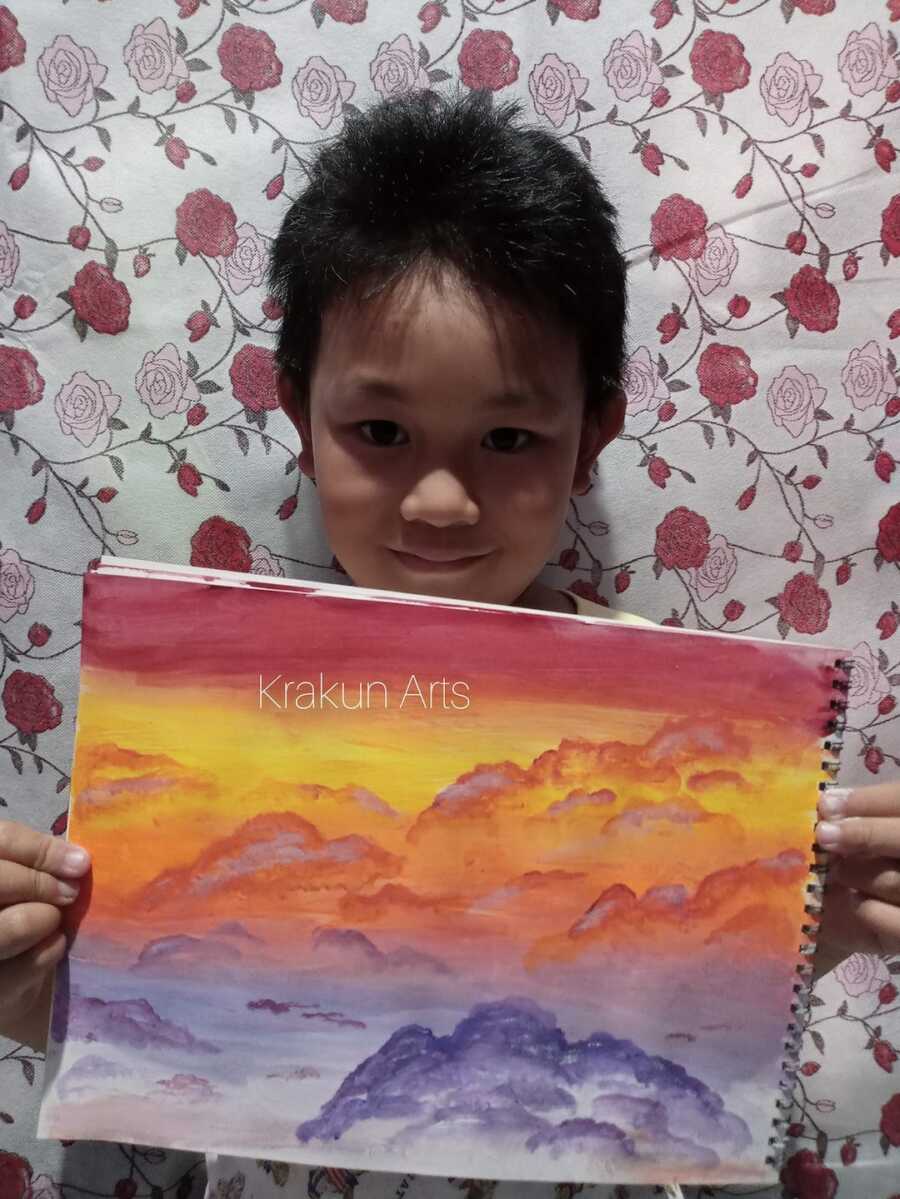
Struggles at School
In preschool, his penmanship never improved even if he practiced writing daily. After school, he would sometimes tear up his practice papers when I tell him he wrote 7, 5, and 3 the other way. He used to write ‘n’ as ‘u’ and ‘b’ as ‘p’ even with constant teaching and reminders. He struggled with listening to instructions and had to be told again and again how to do things with school work. He interrupted people much more than he listened. He talked much, much more than he sat down and listened to someone talking in front. He ran around and kicked stuff much more than he rested. At times, his dad found himself exhausted by Naph’s endless energy. It could’ve also been the reason why he came home from preschool once with a bruise on his right forehead.
When I asked him about his bruise, he said, ‘My friend and I were just playing.’ I was doubtful but I thought to myself, ‘Maybe it’s just child play gone a little rough.’ I brushed it off until I attended a school event and saw one of his classmates pulling his collar roughly and asking him to move out of the way. I immediately talked to the child’s guardian, who told me, ‘Your son is disruptive, so don’t tell me how to raise my grandchild.’ I was hurt. ‘What do you mean he is disruptive?’ I asked. ‘He never stops talking and always wants to be the center of attention. He runs around too much. He dives under tables. The other kids can’t study because of him. Even the other parents are frustrated with your son. Go ask them.’
I took my son and left the school grounds, trembling and seething with anger. ‘My son is just an energetic kid who has a lot of stories to tell,’ I thought to myself. ‘Lies,’ I tried to convince myself the other parents were just trying to gang up on me and my son…but that was until he came home with a busted lip. Without thinking twice, I pulled him out of the preschool and started reading up on his behavior and learning difficulties. I knew I needed expert advice early on, but fear of the truth kept me from contacting a psychiatrist. I also blamed myself for his busted lip. ‘Why didn’t I seek help when I first noticed his impulsivity and impatience?’ I should have gone to seek expert help earlier, but I was in denial.
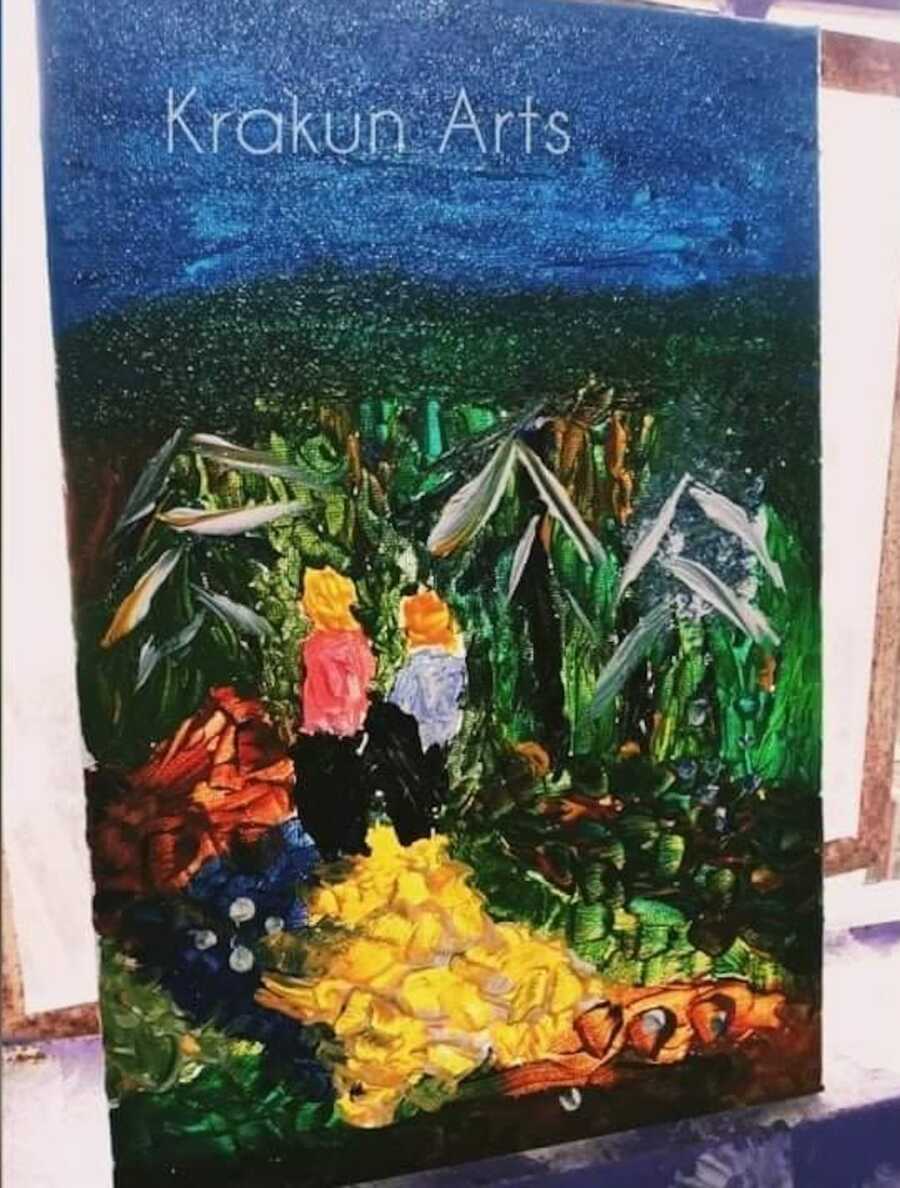
In tears, I spoke with a psychiatrist and provided details of my son’s behavior and struggles with school work. Naph’s psychiatrist was very kind and patient as she ran tests. I cried for nights while waiting for the results. Most of my tears were due to self-blame. I stopped being in denial but I developed feelings of ‘infectivity.’ I blamed my son’s diagnosis on my earlier decisions of waiting and waiting and hoping his focus and impulsivity will improve. I blamed myself for waiting too long for his temper tantrums to die down. I blamed myself for believing people who said things like, ‘That’s normal. He’s a boy after all,’ or ‘Don’t worry about it. He’ll grow out of it,’ or ‘You should be thankful he’s physically healthy.’ I blamed myself for being out of touch with reality. I blamed myself for being his mother.
A Love of Art
Fast forward to 2022, and some things have changed. Naph will soon be a 2nd grader, and he has sold five paintings and one commissioned artwork over the last six months. He still writes 7, the letter c, 5, and 3 the other way no matter how many times we’ve taught him how to write it right. He still talks and moves endlessly. He sometimes has anger outbursts but he no longer turns the entire house upside down. He still has a big voice and needs someone to constantly remind him to listen to his teachers. He still talks over other people. We still don’t have a bed sheet because he moves too much and jumps on the bed whenever nobody’s looking. He still loses things and often forgets where he leaves his stuff. But he has definitely calmed down compared to three years ago.
Earlier this year, Naph had to submit a fingerprint art project in school. When he finished his artwork, I asked him what his painting was. ‘They’re glow sticks, the one in concerts,’ he said. ‘Must be abstract or something,’ I thought to myself. I looked at it again and something at the back of my mind told me, ‘This must be what his psychiatrist said about finding something he is passionate about and helping nurture it.’ We submitted the glow sticks painting (that looked like a bunch of trees in different colors to me) to his teacher, but now I regret not keeping it. After all, it was artwork that told me my son had a unique way of working with colors.
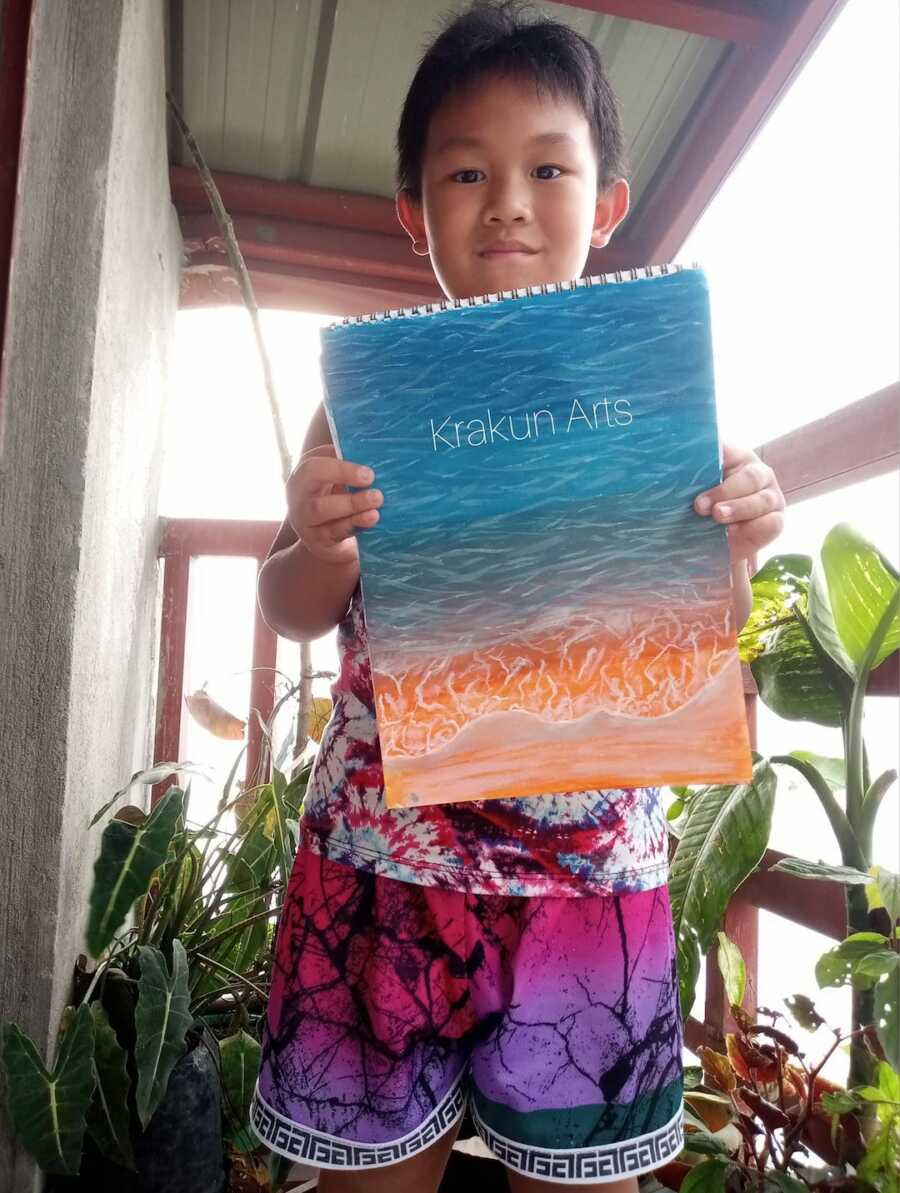
I bought him a new set of watercolor paints, and he started painting. Some of his works were based on photos, while others were from his imagination. I then enrolled him in art classes, bought him paint brushes and canvas—despite the fact we aren’t very well to do financially. Art is NOT cheap, but we strived to support his love for colors. Some loved ones and my best friend gifted him with art materials to help kick off his artist journey. His artist name is Krakun, derived from SAKRAKUN—the Igorot tribal name his great grandmother gave him.
Since then, he has completed more than 20 Oslo paper artworks and more than a dozen paintings on canvas. He uses photos and movie scenes as references for some of his pieces, while others are based solely on his colorful imagination and interpretation of things. His first love is abstract, but he has done landscapes and has been practicing realism. His first sold artwork, titled ‘Chaos,’ was his interpretation of an emotional scene from the movie Avengers: End Game. It was a very special moment to him and to the family when we finally marked the artwork SOLD. It was a moment symbolic of how art helped changed so many things in his life as and ADHD child.
I do get sad sometimes, thinking I should’ve noticed his love for colors earlier. It would have been nice if he found out about it earlier so we could have helped nurture his gift as early as possible. There are lingering regrets, seeing how much his art has impacted his learning and behavioral challenges, but we’ve put those behind us. He has sold three canvas paintings through exhibits for a cause, and his contributions to philanthropic causes are more than enough to stomp on all the doubts and fears we have as parents of an ADHD kid.
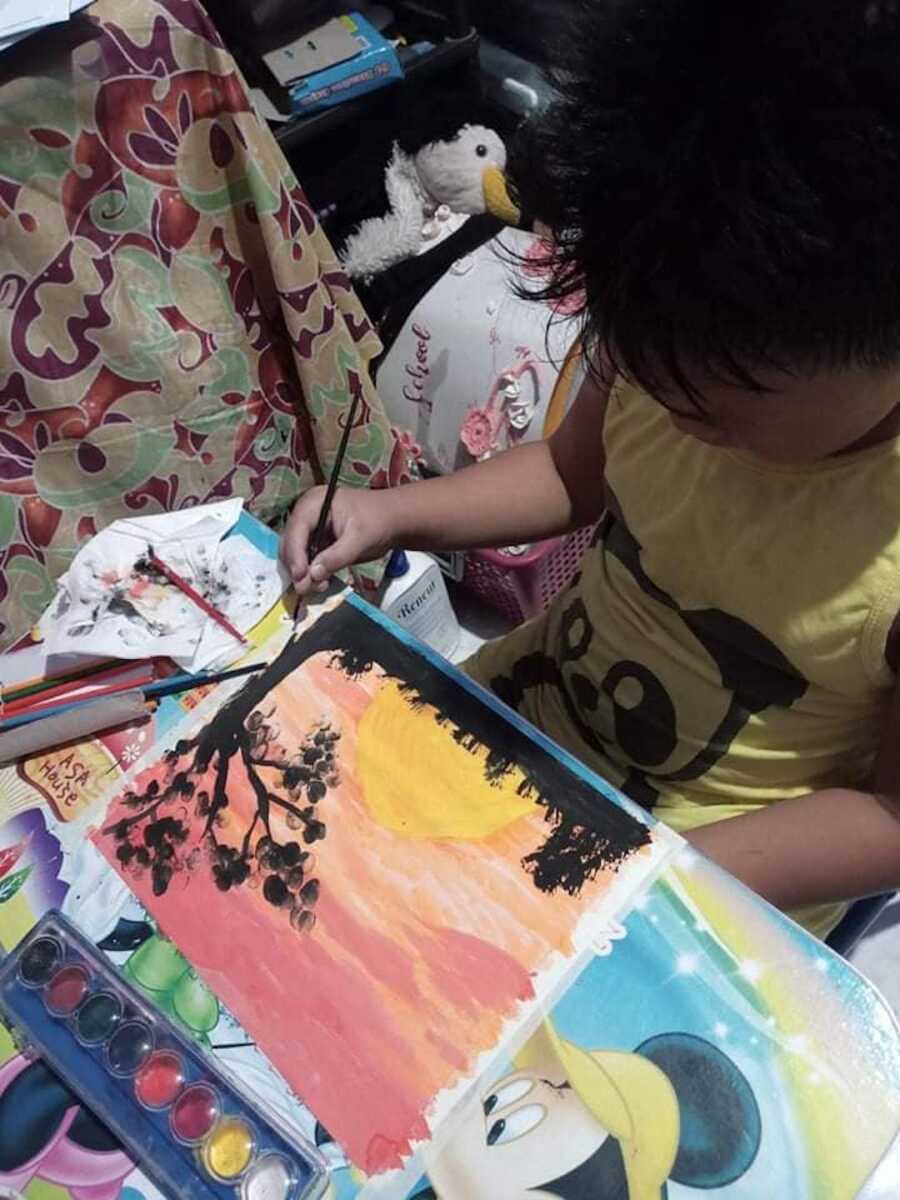
The Other Side of ADHD
Naph’s art journey opened our eyes to the other side of his ADHD. Because of his ADHD, he has a stark hyperfocus on painting. He gets very frustrated with drawing, but with painting, his creativity seems endless. Because of his spontaneity, he makes friends easily. While he has trouble expressing emotions such as sadness and pain, he expresses happiness well. Because of the ‘out-of-the-box’ thinking that comes with ADHD, he creates abstract art that comes from a deeper interpretation of scenarios and things around him. Finally, because of his sensitivity to many things, he never hesitates to offer anything he can whenever we talk to him about humane and philanthropic causes. I can never come close to expressing how grateful I am to have a son as warm-hearted as he is. It brings me to tears every time he nonchalantly says, ‘Okay, let’s help them’ when we ask him if he is willing to donate some of the proceeds of his sold artworks to certain causes.
My son’s art opened a pathway for him to become an achiever as he works to overcome his ADHD challenges. I told him his art will bring him to places and he can use it to raise awareness about issues he is passionate about. Whenever he loses interest in a painting he’s already started, I ask him to repeat this mantra with me: ‘My art helps me. I give back by making art that can help others.’
Naph has many mountains to conquer. For ADHD kids, the mountains are larger and roads are often more jagged, but I hope his love for colors can help him find the right path to his destined place. I hope his art can build bridges where once there were only bodies of deep waters. I hope his brushes can pave the way for a future where ADHD kids aren’t judged by their ‘disruptive’ ways. I hope his paintings can inspire other children with the same struggles to embrace the creative side of ADHD is often lost in the doubts and fears of parents who, like me, are just humans wanting to protect their children from a judgmental world.

In the Philippines, ADHD is not as common in western countries. Children who have ADHD symptoms are often seen as disruptive, disrespectful, domineering, arrogant, unable to react appropriately to social cues, aggressive, intrusive, demanding, too attention-seeking, too hyperactive. There’s no thought for ADHD. It’s just all those negative descriptions. Only the experts understand. Only those whose kids have been diagnosed understand some things don’t come naturally to an ADHD child.
Naph is just one of the many kids around the world whose stories need to be heard. ADHD is NOT everything there is to a diagnosed kid. Naph is smart, very creative, spontaneous, and very generous. Just like other ADHD kids, he tries his best to communicate effectively and control his impulses. Yes, we need extra patience. Yes, we need extra understanding. But just as we need everything extra for an extra child, the child himself is trying extra hard to fit into a world that moves under a certain ‘standard’ on how children should behave themselves.
I hope for the day to come when ADHD kids in my country and around the world don’t get judged automatically based solely on their behavior. I hope for the day to come when ADHD kids won’t be forced to ‘change’ immediately to be accepted. I hope for the day to come when the world becomes more tolerant of ADHD. I hope for the day to come when children like Naph don’t need to explain themselves at all times because the world demands an answer for their actions. I hope for the day to come when Naph can be just Naph, not ‘the disruptive kid.'”

This story was submitted to Love What Matters by Bebang Bee of Baguio City, Philippines. You can follow their journey on Facebook. Be sure to subscribe to our free email newsletter for our best stories.
Read more stories like this:
Do you know someone who could benefit from this story? SHARE this story on Facebook

